| |
TRANSNATIONAL COLLABORATION: 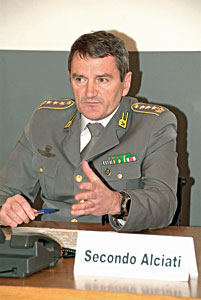
ONCE AGAIN THE MOUNTAIN UNITES
INSTEAD OF DIVIDES
INTERVIEW WITH THE COMMANDER OF THE
GUARDIA DI FINANZA’S ALPINE SCHOOL,
COLONEL SECONDO ALCIATI
Mariapia Ciaghi
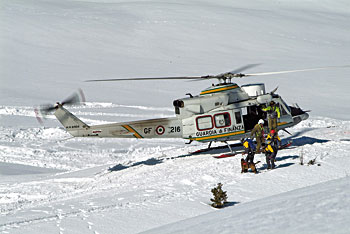 What were the foundations that led to signing a memorandum of intent and collaboration between the Guardia di Finanza’s Alpine Rescue team, the Polish Mountain Rescue Team (TOPR) and the Slovak Republic’s (HZS) rescue team? What are the objectives? What were the foundations that led to signing a memorandum of intent and collaboration between the Guardia di Finanza’s Alpine Rescue team, the Polish Mountain Rescue Team (TOPR) and the Slovak Republic’s (HZS) rescue team? What are the objectives?
The duty of Alpine Rescue is to save human lives. To perform this work with the utmost efficiency, nothing can be left to chance. Even the smallest details are of fundamental, vital importance. The very awareness that such a delicate mission does not allow for hesitation or uncertainty convinced us that there has got to be strict collaboration between rescue teams working on the mountain frontiers. When accidents happen on these mountains, the rescue workers in the States involved frequently have to work together. The diplomatic protocols that are involved follow different procedures which must be known. Being able to intervene successfully requires that the Rescue Teams know each other and that they form an affinity at a cultural and professional level. Due to the fact that work is carried out in a group, preparation and training are fundamental for working synergistically to reach the level of automatic ease that allows for beating the battle against time faced by those dedicated to saving human lives. Just consider that for accidents caused by avalanches, the probability for success is only high if the operations are carried out within fifteen to eighteen minutes.
The joint drills between the different countries’ corps allows for comparing and therefore increasing everybody’s skill levels. Talking about experiences where certain special solutions were used, the verification of different materials which are always evolving and the many technical operative possibilities available provides an opportunity for staying up to date and aids in choosing the most effective solutions in the field.
90% of interventions are carried out in helicopters. On these occasions, if we take the individual preparation as a given, the group work is indispensable. Reciprocal trust is at the base of performing the intervention well. The pilot, the mountain rescue expert and the physician have to know each other well enough that they have no doubts regarding their colleagues’ methods or action-reaction sequence to help carry out the activities.
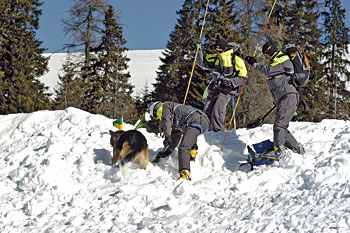 When was the Guardia di Finanza’s Alpine Rescue squad founded and how many stations does it include today? When was the Guardia di Finanza’s Alpine Rescue squad founded and how many stations does it include today?
The Guardia di Finanza’s Alpine Rescue Squad was officially founded here in Predazzo in 1965 on the General’s Carlo Valentino initiative. The Guardia di Finanza, which was founded in 1774 as the corps assigned to border surveillance for military and, above all, financial purposes, has always had stations along the country borders. The men who worked at the stations in the upper Alpine regions have always had to deal with emergency situations. With the Unification of Italy, control along the Alpine ridge was continually intensified until it became necessary to enrol and train persons that have a high level of mountain experience in every aspect. That is how the ad hoc school was founded in 1920.
Today the Italian Alpine Rescue team is made up of 227 men and 4 women who have a sports background, spread across 25 rescue stations distributed across the Alpine Arch, the Apennines and in Sicily on Mt. Etna. Among them we find the best alpinists in the country with points of excellence such as Silvio Mondinelli of the Alagna Valsea Alpine Rescue Centre, who is one of the eight men in the world to have climbed to eight thousand without oxygen tanks.
The rescuers are assisted in their delicate task by 40 canine units. Here in Predazzo is the school for training rescue dogs. At Castiglione del Lago (PG) the Revenue Guard Corps has dog-breeding kennels where they select the animals best suited to this type of work: the best puppies compete for entry to the Alpine Rescue.
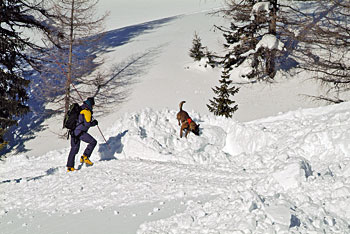 How does one acquire “Alpine Rescue Technician” specialisation? How does one acquire “Alpine Rescue Technician” specialisation?
Are members of the Revenue Guard Corps who volunteer for the Alpine Rescue: they have to pass a selection test before being admitted to the course.
The course lasts seven months and it is divided into two separate phases: the winter phase is centred on gaining knowledge and practice in ski techniques in all of their many forms and avalanche rescue while the summer phase deals with rocks and glaciers. In both cases the study involves both theory and practice.
Snow and avalanche studies are required to obtain a snow observer permit and the skills in this area have become so specific that the Guardia di Finanza’s Alpine Rescue even supplies data for avalanche bulletins to AINEVA (the inter-regional association for snow and avalanches).
First aid and legal medicine courses are also taught for the necessary surveys and communications which must be made to the judicial authorities following interventions.
Safety in the mountain is a very deeply felt issue that contributes to raising the quality of access to natural beauty and at the same time it increases awareness about the specific characteristics of the territory. How are you planning on developing this transnational collaboratory network that now involves Poland and the Slovak Republic?
Collaboration between the various states is fundamental and it takes place daily. There are many joint drills between the Italians, Poles, Slovakians, Czechs and French aimed at exchanging skills and views. That is the only way to optimise the service which is constantly evolving also in light of the many variables that can condition interventions.
It is fundamental to remember that it is frequently human intervention that is at the centre of rescue operations when machinery cannot make it to the site. It is the preparation, readiness, experience and capacity of the rescuers that determines the positive outcome of an operation, and in these cases it means life or death…
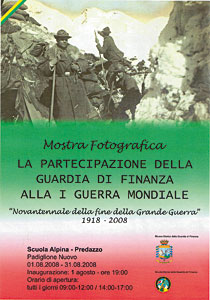 How is accident prevention promoted in the mountains? What channels can be used to safely enjoy the Alpine environment for recreation, alpinism, sports or tourism, and how can safety be improved? How is accident prevention promoted in the mountains? What channels can be used to safely enjoy the Alpine environment for recreation, alpinism, sports or tourism, and how can safety be improved?
Over 90% of mountain accidents take place due to the ‘levity’ with which people adventure off without having any idea, or for an inflated sense of security of people who believe they are true experts.
Both of these behaviours can have tragic consequences and constrain Alpine Rescue to intervene in even hostile conditions putting their own lives at stake.
A bit of common sense and modesty could definitely have an incisive effect on reducing the number of accidents that take place in our splendid mountains.
In order to remedy this basic lack of knowledge at the root, at least partially, training courses have been implemented in schools: the students come to visit us and we dedicate them time aimed at instilling the importance of prevention and respect of the mountain in all of its aspects.
The Alpine School takes an active part in the project backed by the Autonomous Province of Trento: a Mountain-School conceived and backed by Professor Ferraris is aimed at looking more closely at the many mountain themes.

The photo is from the ceremony that sealed the memorandum of intent signed by Commander of the Guardia di Finanza’s Alpine School, Colonel Secondo Alciati, by General Commander of the Polish Rescue, Engineer Jan Krzysztof and by the General Commander of the Slovakian Mountain Rescue, engineer Jozef Janiga. The Vice-Minister of the Interior Jozef Bucek also attended with the Slovakian delegation. |
|